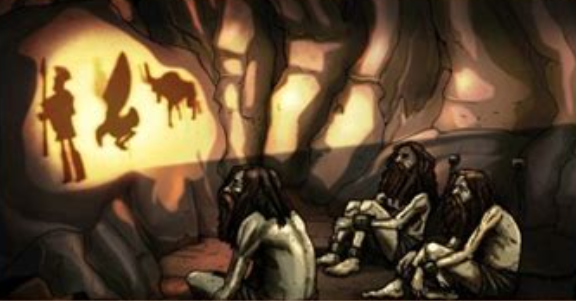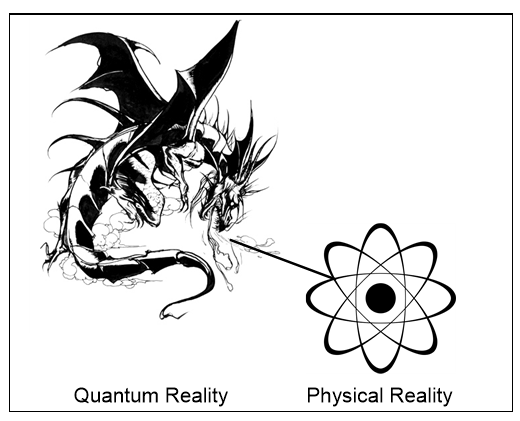Abbott, E. (1884). Flatland: A romance of many dimensions. Project Gutenberg. http://www.gutenberg.org/etext/201
Adams, D. (1995). The Restaurant at the End of the Universe. Ballentine.
Aspect, A., Grangier, P., & Roger, G. (1982). Experimental Realization of Einstein-Podolsky-Rosen-Bohm Gedankenexperiment: A New Violation of Bell’s Inequalities. Physical Review Letters, 49(2), 91–94.
Audretsch, J. (2004). Entangled World: The fascination of quantum information and computation. Wiley.
Baggot, J. (2013). Farewell to Reality: How fairytale physics betrays the search for scientific truth. Constable.
Barbour, J. (1999). The End of Time: The next revolution in physics. Oxford University Press.
Barrow, J. D. (2007). New theories of everything. Oxford University Press.
Bekenstein, J. D. (2003). Information in the Holographic Universe. Scientific American, 289(2), 58–65.
Bojowald, M. (2008). Follow the Bouncing Universe. Scientific American, October, 28–33.
Bolles, E. B. (1999). Galileo’s Commandment: 2,500 years of great science writing. W. H. Freeman.
Cho, A. (2000). Physicists Unveil Schrodinger’s SQUID. Science, 287(31 March).
Cox, B., & Forshaw, J. (2011). The Quantum Universe: Everything That Can Happen Does Happen. Allen Lane.
Davies, P., & Brown, J. R. (1999). The Ghost in the Atom. Cambridge University Press.
D’Espagnat, B. (1979). The quantum theory and reality. Scientific American, 241(5), 158–182.
Deutsch, D. (1997). The Fabric of Reality. Allen lane.
Einstein, A., Podolsky, P., & Rosen, N. (1935). Can quantum-mechanical description of physical reality be considered complete? Phys. Rev., 47, 777–780.
Feynman, R. P., Leighton, R. B., & Sands, M. (1977). The Feynman Lectures on Physics. Addison-Wesley.
Greene, B. (2004). The Fabric of the Cosmos. Vintage Books.
Herbert, N. (1985). Quantum Reality: Beyond the New Physics. Anchor Books.
Hoffman, D. (2020). The Case Against Reality: How Evolution Hid The Truth From Our Eyes. Penguin Books.
Kwiat, P. G., Weinfurter, H., Herzog, T., Zeilinger, A., & Kasevich, M. A. (1995). Interaction-free Measurement. Phys. Rev. Lett., 74, 4763.
Laughlin, R. B. (2005). A Different Universe: Reinventing physics from the bottom down. Basic Books.
Lederman, L. M., & Hill, C. T. (2004). Symmetry and the beautiful universe. Prometheus Books.
- Arndt, O. Nairz, J. Voss-Andreae, C. Keller, G. van der Z., & Zeilinger, A. (1999). Wave particle duality of C60 molecules. Nature, 401, 680–682.
Mermin, N. D. (2009). Whats bad about this habit? Physics Today, May.
Oerter, R. (2006). The Theory of Almost Everything. Plume, Penguin.
Penrose, R. (1994). Shadows of the Mind. Oxford University Press.
Salart, D., Baas, A., Branciard, C., Gisin, N., & Zbinden, H. (2008). Testing spooky action at a distance. Nature, 454, 861–864.
Satinover, J. (2001). The Quantum Brain. John Wiley and Sons, Inc.
Schiller, C. (2009). Motion Mountain: The Free Physics Textbook (http://www.motionmountain.net/index.html, Ed.).
Tegmark, M., & Wheeler, J. A. (2001). 100 Years of the Quantum. Scientific American, Feb, p68-75.
Walker, E. H. (2000). The Physics of Consciousness. Perseus Publishing.
Wheeler, J. A. (1983). Law without law. In J. A. Wheeler & W. H. Zurek (Eds.), Quantum Theory and Measurement (pp. 182–213). Princeton University Press.
Wilczek, F. (2008). The Lightness of Being: Mass, Ether and the Unification of forces. Basic Books.
Wootters, W., & Zurek, W. (1982). A Single Quantum Cannot Be Cloned. Nature, 299, 802–803.
Zeh, H. D. (2004). The Wave Function: It or Bit? In J. D. Barrow, P. C. W. Davies, & J. Charles L. Harper (Eds.), Science and Ultimate Reality: Quantum Theory, Cosmology and Complexity (p. http://arxiv.org/abs/quant-ph/0204088). Cambridge University Press.



